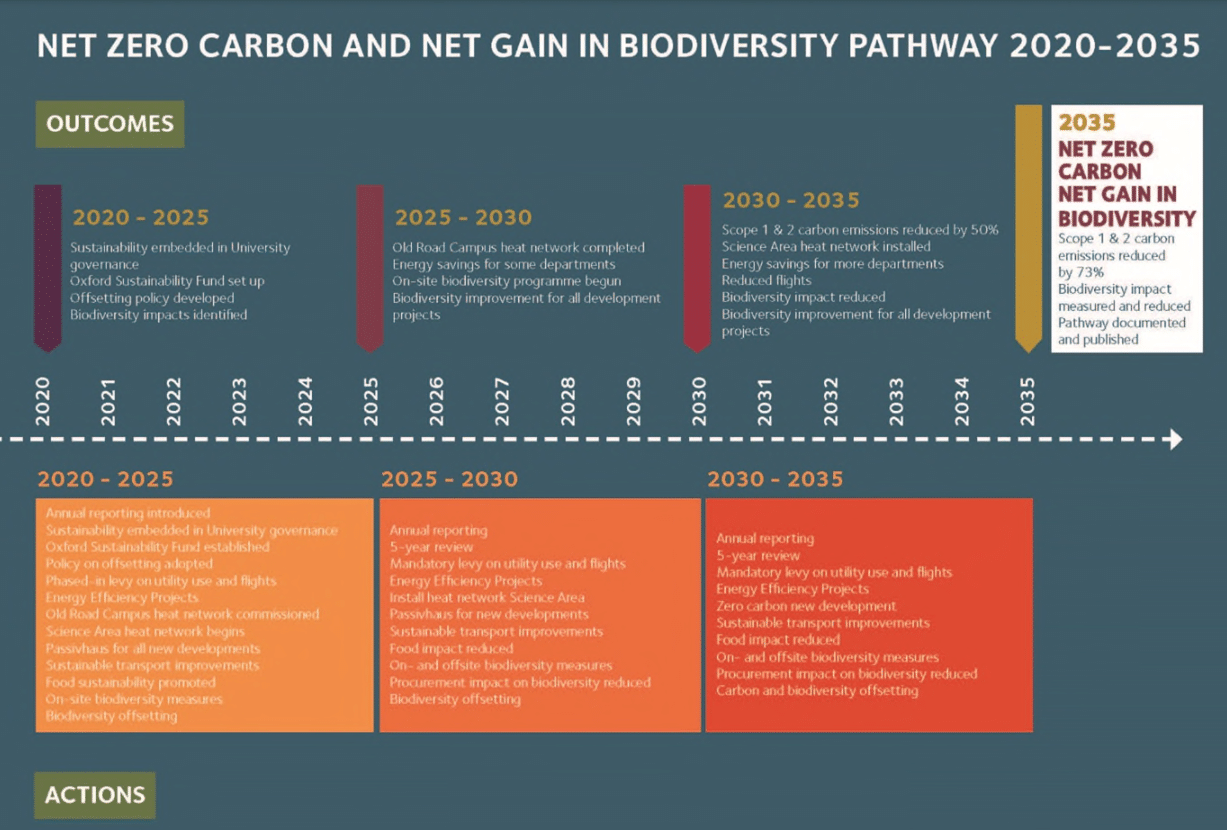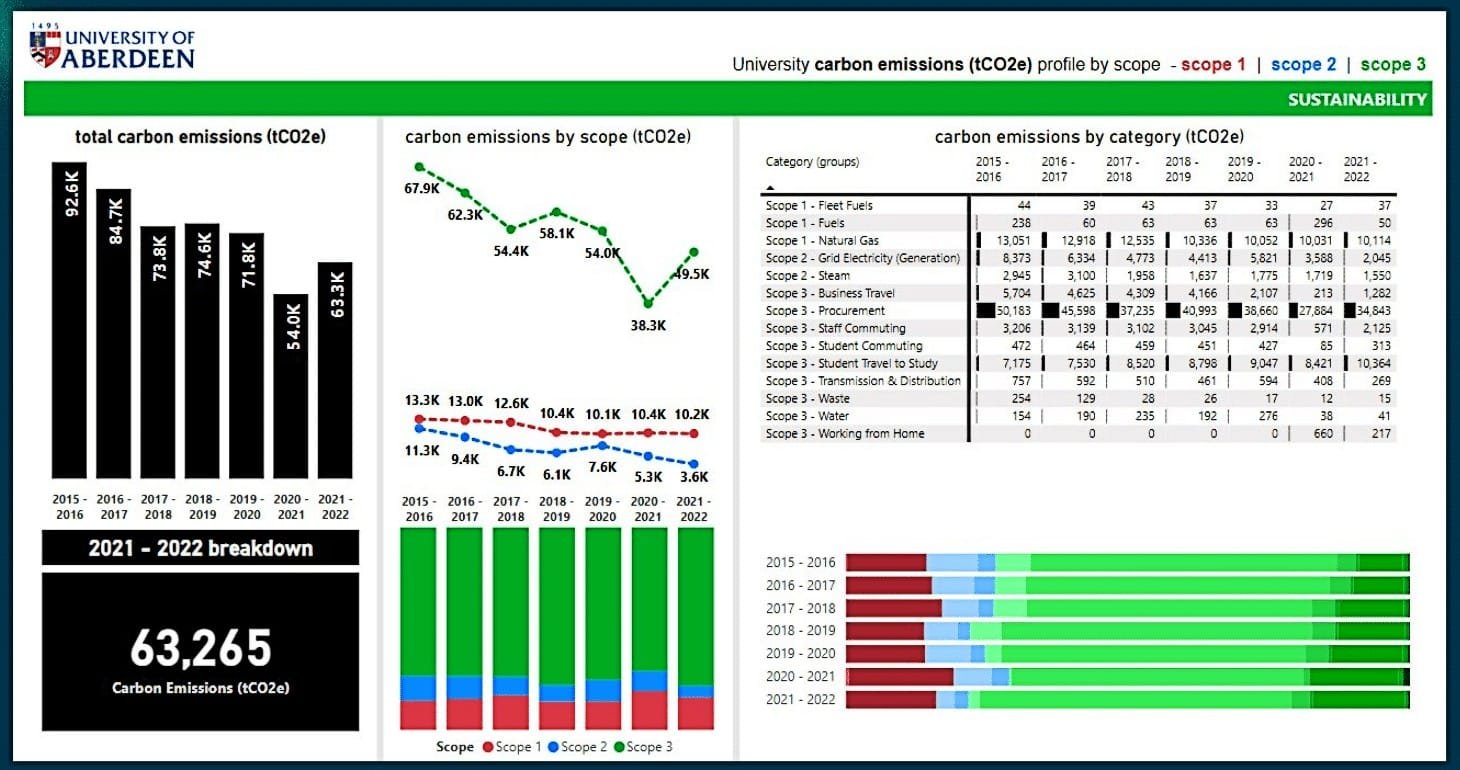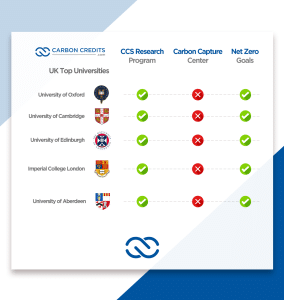Oxford University’s Carbon Management Program
Launched in December 2022, the Carbon Management Program at the Oxford Institute for Energy Studies (OIES) focuses on the in-depth examination of business strategies aimed at implementing groundbreaking low-carbon technologies essential for transitioning to a net zero world. Specifically, these technologies include carbon capture, utilization, and storage (CCUS) as well as carbon dioxide removal (CDR) solutions, spanning both technological and natural approaches.
The program scrutinizes the role of carbon markets, encompassing both voluntary and regulatory compliance mechanisms, in stimulating investments towards these transformative technologies. The Program’s research activities focus on 3 key thematic areas:
Carbon Capture, Utilization and Storage (CCUS):
The research segment examines the feasibility of CCUS in various sectors like oil & gas, steel, cement, and waste-to-energy. It provides insights into the economic, policy, and regulatory aspects of CCUS adoption.
Additionally, it assesses different policy support methods like tax incentives and carbon pricing to promote CCUS deployment. Comparative analyses with alternative decarbonization solutions in sectors like steel production (e.g., hydrogen adoption) and renewables are also conducted.
Carbon Dioxide Removal (CDR):
COP27 emphasized the importance of taking CO2 out of the air to meet the climate goals outlined in the Paris Agreement. Research in this area looks into various ways to do this, known as Carbon Dioxide Removal (CDR) solutions, to help us transition to cleaner energy and reach those targets.
CDR methods cover a wide range of techniques, so this research zeroes in on the most promising ones like direct air capture (DAC), bioenergy with carbon capture and storage (BECCS), and biochar production. It also explores newer solutions to see how practical and scalable they are.
Carbon Markets:
The third research area of the Program focuses on integrating CCUS and CDR solutions into both voluntary and mandatory carbon markets. Specifically, it offers solutions to significant challenges that have slowed down the progress of CCUS and CDR in voluntary carbon markets and emissions trading systems.
These solutions address various issues, including the need for robust carbon accounting frameworks, methods to ensure the permanence of carbon removal and to manage the risk of leakage or reversal, and assessments of the types of claims companies can make by investing in these solutions.
The University aims to achieve its own net zero carbon goal and biodiversity net gain by 2035, with the following pathway:


“Oxford Net Zero” Initiative
Oxford Net Zero is an interdisciplinary research effort drawing on 15 years of climate neutrality research at the University of Oxford. It is dedicated to monitoring progress, establishing standards, and guiding effective solutions across various fields including climate science, law, policy, economics, clean energy, transportation, land use, food systems, and CDR.
Essential climate change questions that Oxford Net Zero addresses include:
- How will carbon dioxide be distributed between the atmosphere, oceans, biosphere and lithosphere?
- Where will it be stored, in what forms, how stable will these storage pools be, who will own them and be responsible for maintaining them over the short medium and long terms?
- How does net zero policy extend to other greenhouse gases?
- How will the social license to generate, emit, capture, transport, and store carbon dioxide evolve over the coming century?
READ MORE: Oxford Revises Principles for Net Zero Aligned Carbon Offsetting
University of Cambridge Carbon Capture, Storage And Use Research
The University of Cambridge’s Carbon Capture, Storage, and Use (CCSU) research is part of the Energy Transitions@Cambridge initiative, an interdisciplinary research center dedicated to addressing current and future energy challenges. With over 250 academics from 30 departments and faculties, the initiative aims to develop solutions for energy transitions.
The CCSU research focuses on understanding and raising awareness of opportunities and risks associated with CCUS. Areas of focus include chemical looping of solid fuels to produce clean CO2, hydrogasification of coal to methane gas, reforming of methane to hydrogen, and seismological observations of active injection sites. On the use side, research covers manufacturing processes of CO2 and carbonate mineralization.
By bringing together academics and external partners, the university’s research program aims to explore cutting-edge technology themes in carbon capture for large-scale decarbonization.
Cambridge Zero, the University’s ambitious new climate initiative, will generate ideas and innovations to help shape a sustainable future – and equip future generations of leaders with the skills to navigate the global challenges of the coming decades.
The University made history by becoming the first university to adopt a science-based target for emissions reduction, aiming to limit global warming to 1.5 degrees Celsius. It plans to cut greenhouse gas emissions to zero by 2038.
To achieve this, Cambridge is exploring the substitution of gas with alternative heat technologies on a large scale and is progressively transitioning to renewable sources for its power supply. Watch below to learn more about the university’s climate initiative.
[embedded content]
University Of Edinburgh CCS Research
The University of Edinburgh’s School of Engineering hosts one of the UK’s largest carbon capture research groups, focusing on carbon dioxide capture through adsorption and membrane separations. This group is part of the Scottish Carbon Capture and Storage (SCCS) Centre, the UK’s largest CCS consortium, which includes over 75 researchers from the University of Edinburgh’s Schools of Geosciences, Engineering, and Chemistry, Heriot-Watt University, and the British Geological Survey.
The Adsorption & Membrane group at the University of Edinburgh specializes in:
- Adsorbent Testing and Ranking: Using zero-length column systems to evaluate adsorbents for CO2 capture.
- Membrane Testing: Assessing polymers for carbon capture membranes.
- Molecular Modelling: Simulating novel nanoporous materials.
- Dynamic Process Modelling: Simulating adsorption and membrane-based capture technologies.
- Process Integration and Optimization: Enhancing efficiency of capture processes.
- Circulating Fluidised Beds: Studying fluid dynamics for improved carbon capture.
- Mixed-Matrix Membranes and Carbon Nanotubes: Developing advanced materials for capture applications.
This extensive expertise positions the University of Edinburgh as a leading institution in the research and development of carbon capture technologies.
Zero by 2040
The University has also committed to becoming zero carbon by 2040 as outlined in its Climate Strategy 2016. This strategy employs a comprehensive whole-institution approach to climate change mitigation and adaptation to achieve ambitious targets.
In alignment with the 2016 Paris Agreement, which aims to reduce global greenhouse gas emissions, the University is committed to supporting Scotland’s and the world’s transition to a low-carbon economy.
Key goals include reducing carbon emissions by 50% per £ million turnover from a 2007/08 baseline and achieving net zero carbon status by 2040. The University plans to achieve these objectives through initiatives in research, learning and teaching, operational changes, responsible investment, and exploring renewable energy opportunities.
[embedded content]
Furthermore, the University will use its 5 campuses as “living laboratories” to experiment with and demonstrate innovative ideas that can be implemented elsewhere, fostering a culture of sustainability and practical application in the fight against climate change.
This year, the University is undertaking a major project to achieve carbon neutrality, which is considered the largest of its kind in the UK. This multimillion-pound initiative involves planting more than 2 million trees and restoring at least 855 hectares of peatlands. The project is a crucial part of the University’s goal of 2040 net zero.
Initial regeneration efforts will focus on a 431-hectare site overlooking the Ochil Hills in Stirlingshire and 26 hectares at Rullion Green in the Pentland Hills Regional Park near Edinburgh. Over the next 50 years, the project aims to remove 1 million tonnes of carbon dioxide from the atmosphere, equivalent to the emissions from over 9 million car journeys between Edinburgh and London.
Imperial College London – CCS Research Program
Imperial College’s carbon capture and sequestration (CCS) research program is the largest in the UK, involving over 30 professionals across various departments. They focus on engineering, industrial CCS, subsurface CO2 behavior, and legal and regulatory aspects. The university collaborates with the UK CCS Research Centre, CO2 GeoNet, and the European Energy Research Alliance.
The program has refurbished a pilot carbon capture plant to provide hands-on experience for students and professionals. Built to industry standards, it captures flue gas from a power station and supports research conducted by leading industrial organizations.
Imperial College London is also employing various means to directly curb its GHG emissions. The school’s long-term goal is to be a sustainable and net zero carbon institution by 2040.
ICL’s Transition to Zero Pollution
The Transition to Zero Pollution initiative is structured around 5 focus themes, each addressing a significant challenge that demands exploration, innovation, and interdisciplinary collaboration:
- Emerging Environmental Hazards and Health
- Resilient, Regenerative, and Restorative Systems
- Sustainable Resources and Zero Waste
- Urban Ecosystems: People and Planet
- Zero Pollution Mobility
Know more about ICL’s TZP initiative here.
University of Aberdeen’s Carbon Capture Machine
The University of Aberdeen is at the forefront of carbon capture and utilization research, with experts developing processes and products that not only sequester emissions but also add economic value.
In 2017, the university’s patented CO2 capture and conversion technology led to the establishment of Carbon Capture Machine Ltd (CCM), which became a finalist in the NRG COSIA Carbon XPrize competition, offering a $20 million prize to the winner.
CCM’s technology involves dissolving CO2 flue gas into slightly alkaline water, which is then mixed with a brine source containing dissolved calcium and magnesium ions. This process generates Precipitated Calcium Carbonate (PCC) and Precipitated Magnesium Carbonate (PMC), both of which are nearly insoluble and have various industrial applications.
PCCs are used in industries such as papermaking, plastics, paints, adhesives, and in the development of cement and concrete.
Additionally, sodium chloride (NaCl) is extracted from the final products. These carbon conversion products are carbon negative and in high demand across multiple industries, offering companies opportunities to reduce emissions and create new revenue streams through carbon capture and utilization technology.
Aberdeen’s Net Zero Goal
Same with the other top universities, the University of Aberdeen aims to reach net zero by 2040. As part of this climate commitment, the university became a member of the Global Climate Letter and the One Planet Pledge.
At a glance, here is the university’s carbon emissions, total and by scope, accessible through an online tool.


In addition to enhancing emissions reporting, the university is actively developing a comprehensive net zero strategy. This strategy includes setting targets and exploring pathways across various business functions to achieve carbon neutrality. The publication of this strategy will be available this year.
Conclusion
Leading universities in the UK are advancing carbon capture, utilization, and storage (CCUS) technologies, essential for achieving net zero goals. Oxford, Cambridge, Imperial College London, the University of Edinburgh, and the University of Aberdeen are driving research and implementation strategies that address the technical and economic challenges of CCUS.


Their interdisciplinary programs and climate initiatives integrate these solutions into broader carbon markets and regulatory systems. These universities’ efforts are crucial in transitioning to a sustainable energy future, demonstrating the critical role of academic institutions in global climate action. Through collaboration with industry and government, UK universities are setting the standard for climate action and paving the way for a net zero future.
- SEO Powered Content & PR Distribution. Get Amplified Today.
- PlatoData.Network Vertical Generative Ai. Empower Yourself. Access Here.
- PlatoAiStream. Web3 Intelligence. Knowledge Amplified. Access Here.
- PlatoESG. Carbon, CleanTech, Energy, Environment, Solar, Waste Management. Access Here.
- PlatoHealth. Biotech and Clinical Trials Intelligence. Access Here.
- Source: https://carboncredits.com/how-top-uk-universities-reduce-their-carbon-footprint-to-reach-net-zero/



